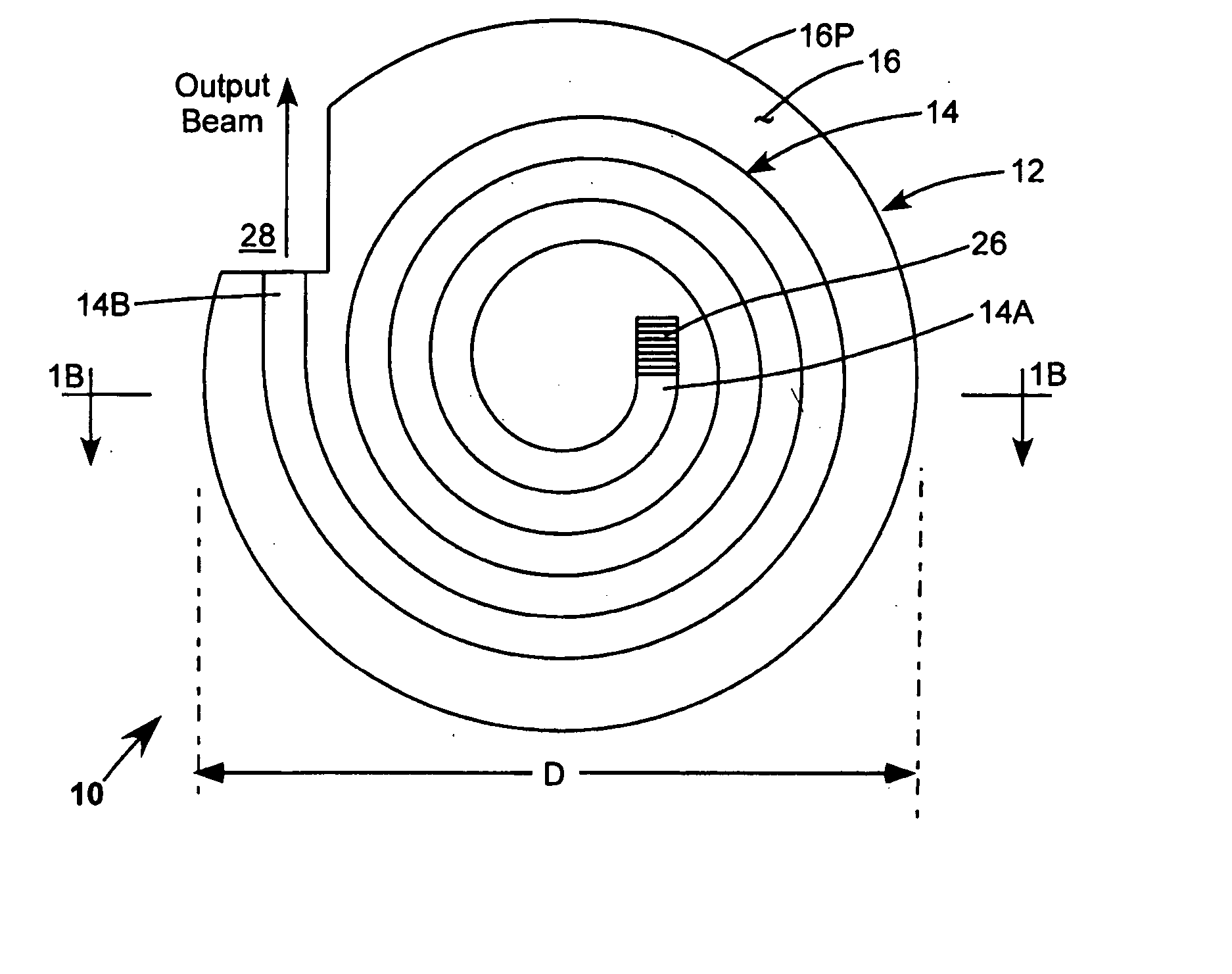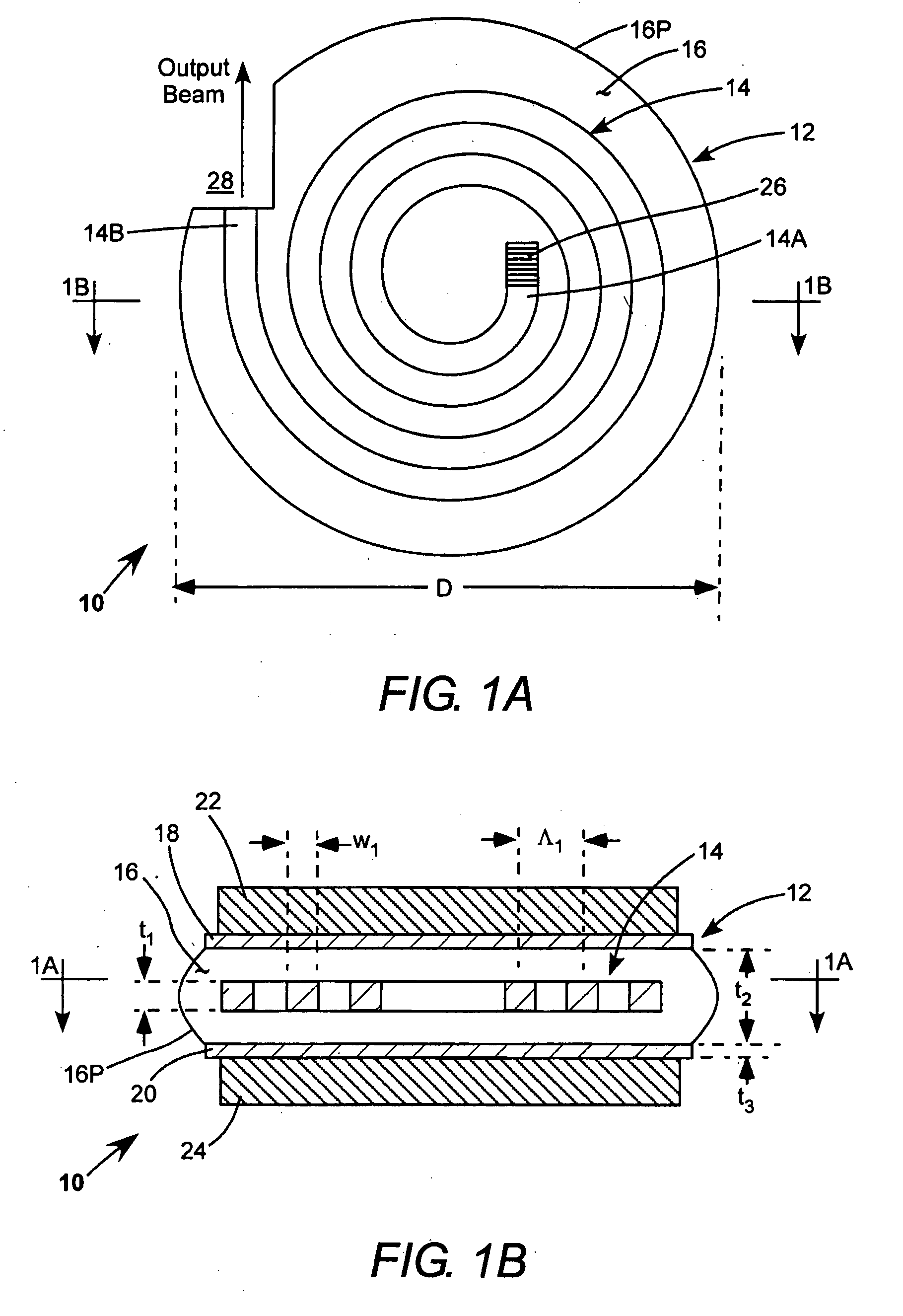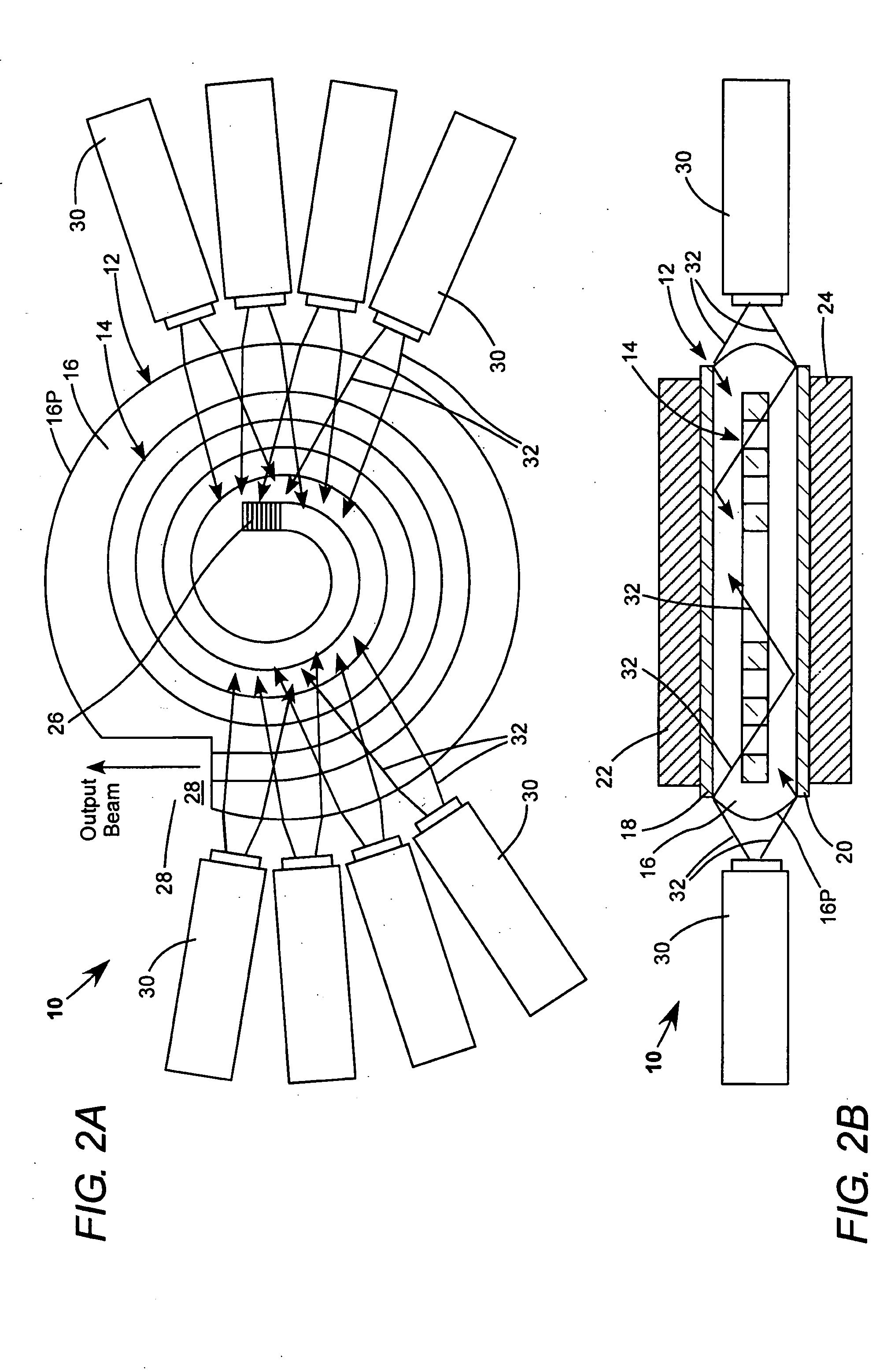Monolithic wafer-scale waveguide-laser
a waveguide and monolithic technology, applied in the direction of laser details, active medium materials, active medium shape and construction, etc., can solve the problems of increasing labor and cost in the manufacturing process, exposing the optical fiber to a danger of scratching the fiber cladding, and reducing the coupling
- Summary
- Abstract
- Description
- Claims
- Application Information
AI Technical Summary
Benefits of technology
Problems solved by technology
Method used
Image
Examples
Embodiment Construction
[0025] Referring now to the drawings, wherein like features are designated by like reference numerals, FIG. 1A and FIG. 1B schematically illustrate a preferred embodiment 10 of a monolithic, wafer-scale waveguide-laser in accordance with the present invention. Laser 10 includes a wafer body 12, preferably disc-shaped and having a diameter (D). The wafer body includes an ion-doped spiral waveguide 14 preferably having a rectangular cross-section. The waveguide is formed from a material having a refractive index n1. The rectangular cross-section is characterized by a thickness (height) t1 and a width w1. The waveguide spirals are separated center-to-center by a distance Λ1.
[0026] The waveguide layer is immersed in an inner cladding layer 16. Cladding layer 16 is formed from a material having a refractive index n2, where n2 is less than n1. Inner cladding layer 16 has a thickness t2. The inner cladding layer is sandwiched between first and second outer cladding layers 18 and 20. Outer...
PUM
 Login to View More
Login to View More Abstract
Description
Claims
Application Information
 Login to View More
Login to View More - R&D
- Intellectual Property
- Life Sciences
- Materials
- Tech Scout
- Unparalleled Data Quality
- Higher Quality Content
- 60% Fewer Hallucinations
Browse by: Latest US Patents, China's latest patents, Technical Efficacy Thesaurus, Application Domain, Technology Topic, Popular Technical Reports.
© 2025 PatSnap. All rights reserved.Legal|Privacy policy|Modern Slavery Act Transparency Statement|Sitemap|About US| Contact US: help@patsnap.com



